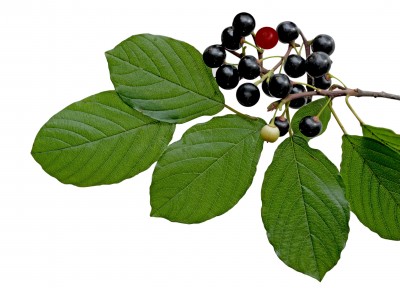Maqui Berry - Aristotelia chilensis

Common Names: Maqui berry, Maqui, Maque, Chilean wineberry, Chilean wine berry, Aristotelia chilensis, Chilean berry, Latin: Aristotelia chilensis, origin: Mapuche berry
Latin Name: Aristotelia chilensis
Origin: South America
Short Introduction
It is very difficult to cultivate this tree in Central European conditions.
Detailed Description
Maqui berry is a plant valued for its anti-inflammatory effects and is especially sought after for its benefits in weight management.
Botanical Information
Maqui berry, scientifically known as Aristotelia chilensis, is an evergreen tree that grows up to 5 meters in height. The bark is smooth, light-reflective, and soft to the touch. Its branches are narrow, flexible, and simple, yet highly branched. The leaves are simple, green, positioned opposite each other with distinctly red petioles, and are lanceolate to rectangular in shape. The leaf margins are convex and smooth without a cuticle, while the leaf veins are prominent both visually and by touch. As the tree ages, the outer layers peel away, providing nutrients to new growth.
Maqui blooms at the end of the spring season. Its small, white flowers are unisexual, and the tree is dioecious. In both traditional medicine and local culture, the most important part of the plant is its fruit. Maqui bears edible berries about 0.5 cm in size, which are dark pink, taste similar to blackberries, and contain up to ten seeds. Literature cites that a seven-year-old tree can yield up to 10 kg of berries annually.
Wild maqui trees are most commonly found in the rainforests of Chile, covering approximately 200,000 hectares. The average annual yield of maqui per hectare is around 200 kg, but the total commercial harvest is about 85 tons due to challenges related to collection, processing, and transportation.
The earliest documented mentions of Maqui berry date back to the period when Spanish conquistadors first encountered the Mapuche tribe in the southern Andes. They documented that local warriors would consume maqui fruit and other parts of the plant to acquire extraordinary strength and stamina. The Mapuche have used this plant for centuries. The Mapuche people are significant in the region for maintaining autonomy against colonial powers in South America until the 19th century, although that autonomy ended in the 1980s.
Origin and Distribution
Maqui berry is native to the warm, tropical rainforests of Chile and southern Argentina.
There are also cultivated varieties selected for improved growth and yield.
Usage / Dosage
Maqui berries are primarily consumed as food and dietary supplements. They are available raw, dried, or processed into jams, beverages, or as an ingredient in various dishes and drinks. In traditional medicine, maqui extracts are used to treat diarrhea, inflammatory diseases, and fever.
Laboratory studies have investigated the effects of maqui compounds on ischemic complications related to heart failure and malformations, as well as their influence on fat formation, inflammation, and the oxidation of LDL cholesterol.
Research has shown that maqui berry compounds reduce the activity of pro-inflammatory factors that also contribute to colorectal cancer cell proliferation. Positive effects have been observed in experimental models of induced inflammatory diseases and early cancer growth, indicating a slowed disease progression. International conferences often discuss the Oxalidales order (to which maqui belongs) due to their impact on health and disease prevention as well as disease management.
Bioactive compounds in maqui—such as malvidin, petunidin, coumarins, and triterpenes—contribute to its potent antioxidant activity. Notably, maqui berry has demonstrated one of the highest antioxidant values measured. These compounds also support the stabilization of red blood cell membranes in patients receiving therapies that reduce blood cell counts.
Maqui acts as a natural stimulant for the body, though it does not contain substances that affect the central nervous system. Instead, maqui aids the body’s efficient functioning. Thanks to its antioxidants, it helps rapidly increase metabolism and support natural detoxification and systemic efficiency.
In Western countries, maqui is primarily used as a weight loss aid and is especially effective for individuals dealing with lifestyle diseases. Maqui can partially suppress appetite, making it beneficial to consume about 30 minutes before meals. The main advantage, however, is its ability to accelerate metabolism and gradually cleanse the body. The longer one uses maqui, the better the results; with regular intake (three times daily), a mild reduction in weight may be noticeable within 10 to 14 days, with further improvements over time. By naturally stimulating metabolic processes, maqui may help maintain long-term results and reduce the risk of the yo-yo effect. The detoxification process can continue for up to 1.5 months after stopping maqui, depending on the length of use, with weight loss often continuing slightly even after discontinuation.
Active Compounds
Maqui berries contain anthocyanin pigments (similar to those in blueberries and cranberries), with the major pigment being delphinidin glycoside, which accounts for nearly one-third of all pigments, and cyanidin as a secondary component. The total pigment content is about 137.6 mg ± 0.4 mg per 100 g of fresh fruit. Studies using HPLC techniques confirm that maqui is a noteworthy source of anthocyanin pigments for pharmaceutical and food industry applications. The berries are also rich in flavonoids, contributing to their antioxidant effect.
Traditional Dosage
Mix 1 teaspoon (~3g) in 300 ml of water and drink approximately 30 minutes before meals, three times daily. For tablets (400 mg), take 4 tablets three times daily.
